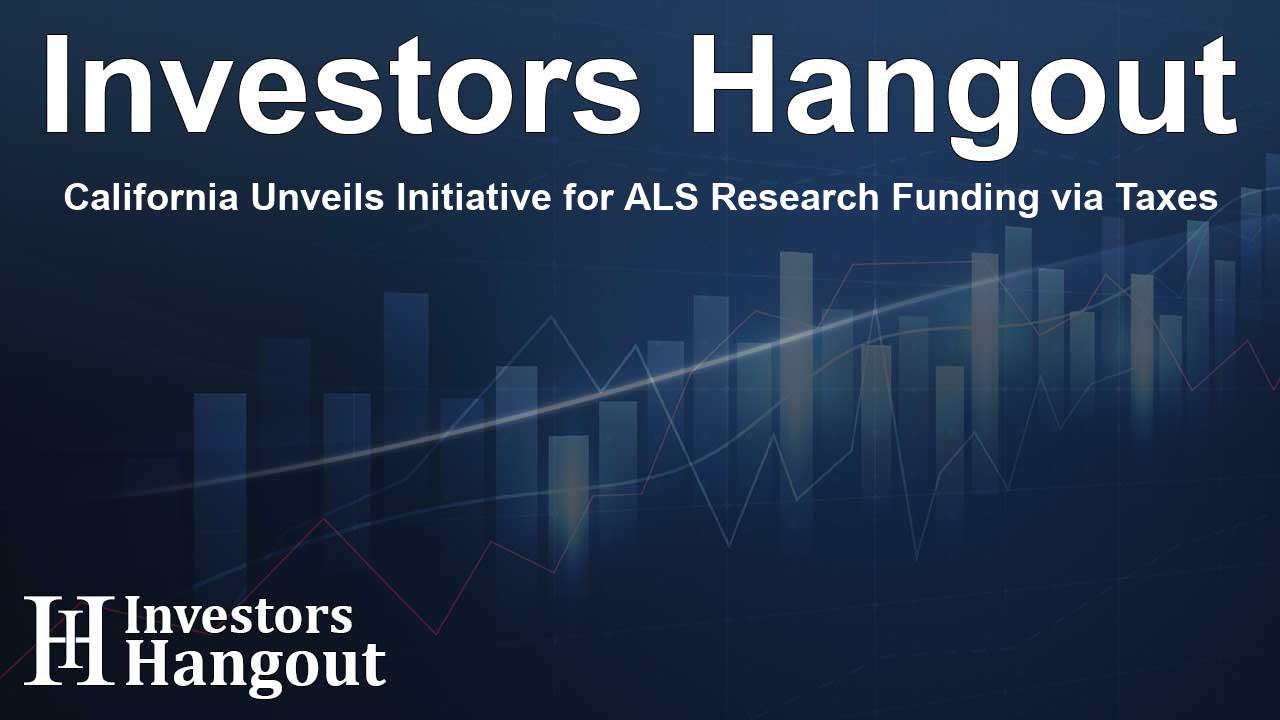California Unveils Initiative for ALS Research Funding via Taxes

California Introduces Tax Initiative for ALS Research
California has embarked on an innovative initiative designed to promote essential research targeted at ALS and various neurodegenerative conditions such as Parkinson's, Alzheimer's, and frontotemporal dementia. This program allows taxpayers to contribute directly to the cause through their income tax returns.
How Tax Contributions Work
To support the California ALS Research Network Voluntary Tax Contribution Fund, taxpayers can make donations starting at just $1 by using code 447 on their income tax returns. This can be done across multiple forms, including 540 2EZ, 540, 540NR Long or Short Form, and 541, Schedule C. A minimum annual fundraising target of $250,000 is required for the program's sustainability, ensuring it remains part of the California income tax return process.
Community Participation in Research Funding
Sheri Strahl, MPH, MBA, the president and CEO of the ALS Network, highlights the importance of collective effort in combating these life-altering diseases. She states, "ALS and related neurodegenerative diseases can impact anyone, so it's on all of us to be a part of the solution." The introduction of this tax donation program establishes a crucial funding source to support the efforts of some of the most brilliant minds in research, facilitating progress from the laboratory to patient care.
Research Selection Process
Established by Assembly Bill 511, this fund empowers Californians who file state income taxes with the opportunity to contribute to cutting-edge research projects. These projects are chosen by a world-class Scientific Advisory Committee led by the ALS Network, a pioneering nonprofit organization dedicated to assisting the ALS community through care services, advocacy, and research.
Understanding ALS
Amyotrophic lateral sclerosis, commonly referred to as ALS or Lou Gehrig's Disease, is a fatal neurodegenerative disorder that severely damages nerve cells in both the brain and spinal cord. The progression of ALS can lead to a range of debilitating symptoms and challenges for those affected.
- The average lifespan of a person diagnosed with ALS is approximately two to five years, highlighting the urgency of effective research and therapies.
- Progression of the disease often results in a loss of mobility, speech, and swallowing ability, while cognitive functions and emotional awareness generally remain intact.
- ALS affects individuals regardless of age, gender, or socioeconomic status, demonstrating its indiscriminate nature.
- Many individuals living with ALS choose to remain at home, which places emotional, physical, and financial strain on families as they navigate the challenges associated with the disease.
- As of now, no cure exists for ALS, emphasizing the critical need for ongoing research and advocacy.
The Mission of the ALS Network
The ALS Network, previously known as ALS Golden West, commits to partnering with the ALS community to facilitate the discovery of preventive strategies, treatments, and potential cures for ALS. Their mission includes providing access to quality care and fostering initiatives aimed at enhancing health outcomes. The organization connects needs with support, questions with answers, influential thinkers with innovative concepts, and research with funding to challenge the status quo.
Learn More About ALS and Join the Effort
For those seeking further information about ALS and the ALS Network, we encourage visiting their official website. You can find valuable resources and updates on their initiatives and research projects.
If you wish to support ALS research through your tax contributions, remember to use code 447 on your tax forms and take part in this impactful initiative aimed at enhancing the quality of life for those affected by this challenging disease.
Frequently Asked Questions
What is the purpose of the California ALS Research Fund?
The fund aims to support research initiatives focusing on ALS and related neurodegenerative diseases through taxpayer contributions.
How can I contribute to the ALS Research Fund?
You can contribute by using code 447 on your California state income tax returns, with donations starting from $1.
Who benefits from the contributions made to the fund?
Contributions directly support research projects selected by expert committees, ultimately benefiting individuals affected by ALS and similar diseases.
Is there a minimum amount needed for the fund to operate?
Yes, a minimum of $250,000 must be raised annually for the fund to remain part of the California income tax return process.
What are the future goals of the ALS Network?
The ALS Network aims to drive research for cures, improve quality of care, and enhance health outcomes for individuals living with ALS.
About The Author
Contact Lucas Young privately here. Or send an email with ATTN: Lucas Young as the subject to contact@investorshangout.com.
About Investors Hangout
Investors Hangout is a leading online stock forum for financial discussion and learning, offering a wide range of free tools and resources. It draws in traders of all levels, who exchange market knowledge, investigate trading tactics, and keep an eye on industry developments in real time. Featuring financial articles, stock message boards, quotes, charts, company profiles, and live news updates. Through cooperative learning and a wealth of informational resources, it helps users from novices creating their first portfolios to experts honing their techniques. Join Investors Hangout today: https://investorshangout.com/
The content of this article is based on factual, publicly available information and does not represent legal, financial, or investment advice. Investors Hangout does not offer financial advice, and the author is not a licensed financial advisor. Consult a qualified advisor before making any financial or investment decisions based on this article. This article should not be considered advice to purchase, sell, or hold any securities or other investments. If any of the material provided here is inaccurate, please contact us for corrections.
